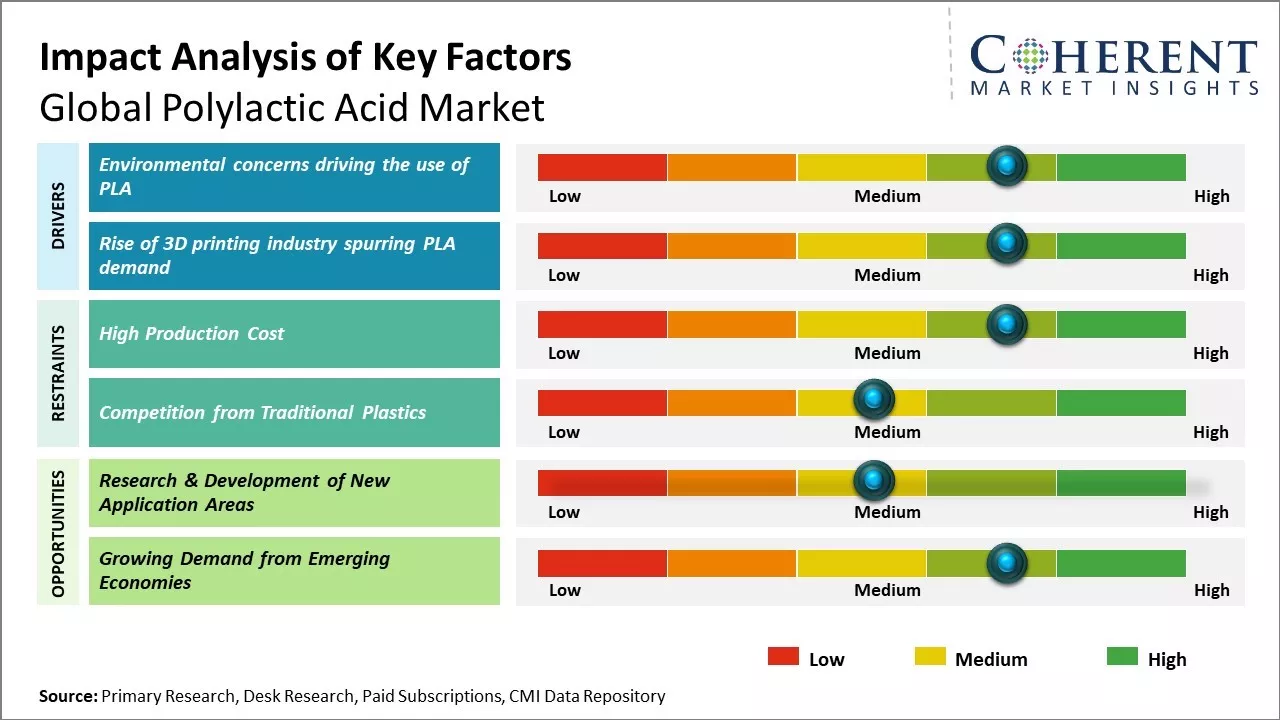The polylactic acid market is estimated to be valued at USD 998.2 Mn in 2025 and is expected to reach USD 3,257.9 Mn by 2032, exhibiting a compound annual growth rate (CAGR) of 18.4% from 2025 to 2032.

To learn more about this report, Request sample copy
The growth of the polylactic acid market is driven by the increasing demand for biodegradable and sustainable polymers from various end-use industries like packaging, textiles, and agriculture. Polylactic acid (PLA) is widely being adopted as it is made from renewable raw materials such as corn, sugarcane, or social plants making it a viable alternative to conventional plastics which are typically derived from petroleum. Moreover, the biodegradable nature and compostable characteristic of PLA have resulted in growing demand from the packaging industry for food packaging, disposable utensils, and coated paper products. Strict government regulations regarding the use of plastics along with rising environmental awareness among consumers are further expected to propel the Polylactic acid (PLA) market growth during the forecast period.
Environmental concerns driving the use of PLA
The growing environmental consciousness across the globe is positively impacting the use of eco-friendly materials. With sustainability becoming a priority, there is an increasing preference for biodegradable and compostable alternatives to reduce dependency on oil-based plastic materials. Polylactic acid is biodegradable in nature and provides a renewable solution made from annually renewable resources like corn. As people become more aware of the environmental damage caused by single-use plastic items that chokes landfills and oceans, the demand for bioplastics is likely to rise. The biodegradability of PLA makes it an attractive option for various packaging applications like food packaging, bottles, containers, etc. Manufacturers in the food and beverage industry are understandably under pressure to switch to sustainable packaging choices. This represents a massive opportunity for PLA to penetrate the packaging market and become the material of choice.
Moreover, legislation banning certain single-use plastic products is anticipated in many countries which will further propel the need for alternatives. PLA being a drop-in replacement for petroleum-based plastics facilitates smooth transition. Stricter environmental policies focusing on waste reduction and promotion of renewables will create a conducive environment for natural biopolymers. Growing eco-consciousness and sustainability driven strategies adopted by corporates are expected to drive preferred usage of PLA over conventional plastics in the coming years.
Joining thousands of companies around the world committed to making the Excellent Business Solutions.
View All Our Clients